Pitcher Plant Info: Growing Pitcher Plants In The Garden
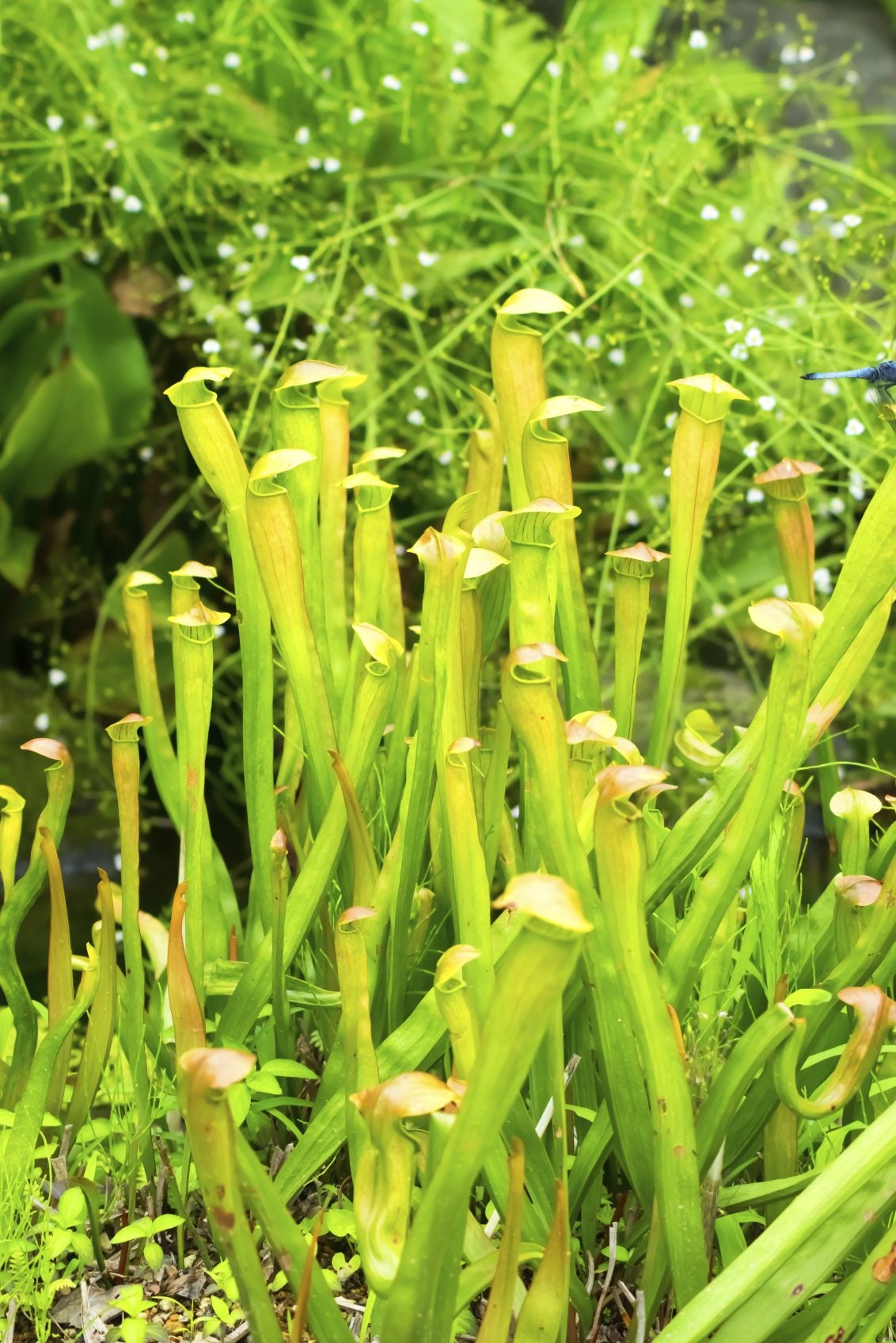

There are over 700 species of carnivorous plants. The American pitcher plant (Sarracenia spp.) is known for its unique pitcher-shaped leaves, bizarre flowers, and its diet of live bugs. Sarracenia is a tropical-looking plant native to Canada and the U.S. East Coast.
Pitcher Plant Info
Growing pitcher plants outdoors requires a combination of conditions quite different from ordinary garden plants. Garden grown pitcher plants love nutrient-poor soil that is deficient in nitrogen and phosphorus. In their native environments, pitcher plants grow in highly acidic, sandy, peat-rich soil. So normal soil nitrogen levels can kill pitcher plants and also invites other competitive plants into their growing space. Pitcher plants in the garden also require full sun. Shade or partially sunny spots will cause them to weaken or even die. Some other pitcher plant info that is important to note is their requirement for a highly humid environment and rather pure water. Pitcher plants don’t like chlorinated water. They prefer either distilled water or rainwater.
Care of Pitcher Plants Outdoors
Garden grown pitcher plants should be placed in a container that can hold water. A tub, a pot without holes at the bottom, or even a do-it-yourself bog garden will work. The trick is holding enough water, so the lower portion of the roots is wet, but the top portion of the growing medium is out of the water. Aim for a steady and consistent water level 6 inches (15 cm.) below the soil. Monitor the water during your rainy season so it doesn’t get too high. Drainage holes or channels should be placed about 6 inches (15 cm.) below the plant in the growing medium. You will have to experiment with this until you get it right. Do not pour water into the pitchers or fill up the pitchers with bugs. That will overwhelm their systems and possibly kill them. If you want to create a bog, you should dig out an area and fill it with peat or peat mixed with compost from carnivorous plants. Do not use normal compost. It is too rich for pitcher plants in the garden. Otherwise, 3 parts peat moss to 1 part sharp sand should suffice as your planting medium. Make sure your pot, tub, or homemade bog is in full sun. Protect the area from the wind. That will dry out the air space. Do not fertilize your pitcher plants. As you can see, the care of pitcher plants outdoors involves some complexity. It is worth it to watch these exotic plants grow and perform!
Gardening tips, videos, info and more delivered right to your inbox!
Sign up for the Gardening Know How newsletter today and receive a free copy of our e-book "How to Grow Delicious Tomatoes".

Karen Boness is the founder of Wild Willow Design, an Australia-based company that specializes in ecological landscape design.
-
 Looking For Plants To Give You The Soft And Fuzzies? Try These 5 Fuzzy Leaf Plant Options
Looking For Plants To Give You The Soft And Fuzzies? Try These 5 Fuzzy Leaf Plant OptionsLovers of texture, drama, silver foliage and tactile plants will adore these special sensory garden additions. These fuzzy leaf plant options will leave you all aglow
By Susan Albert
-
 Get Ready For A Summer Of Hummers! Grow These Full Sun Hummingbird Plants and Flowers
Get Ready For A Summer Of Hummers! Grow These Full Sun Hummingbird Plants and FlowersIf you’re lucky enough to enjoy a sunny backyard, make sure you are maxing out on your pollinator opportunities and grow these full sun hummingbird plants and flowers
By Tonya Barnett
-
 Black Pitcher Plant Leaves – Why Nepenthes Leaves Are Turning Black
Black Pitcher Plant Leaves – Why Nepenthes Leaves Are Turning BlackPitcher plant has specific needs, and it lets you know with alarming clarity when those needs aren't being met. This article explains what to do when you find your pitcher plant's leaves turning black. Click here to learn more.
By Jackie Carroll
-
 Watering Nepenthes – How To Water A Pitcher Plant
Watering Nepenthes – How To Water A Pitcher PlantThere are many types of exotic pitcher plants, all surprisingly easy to grow once you learn how to meet the plant's basic needs, including proper pitcher plant watering. Click here to learn what's involved in watering a pitcher plant.
By Mary H. Dyer
-
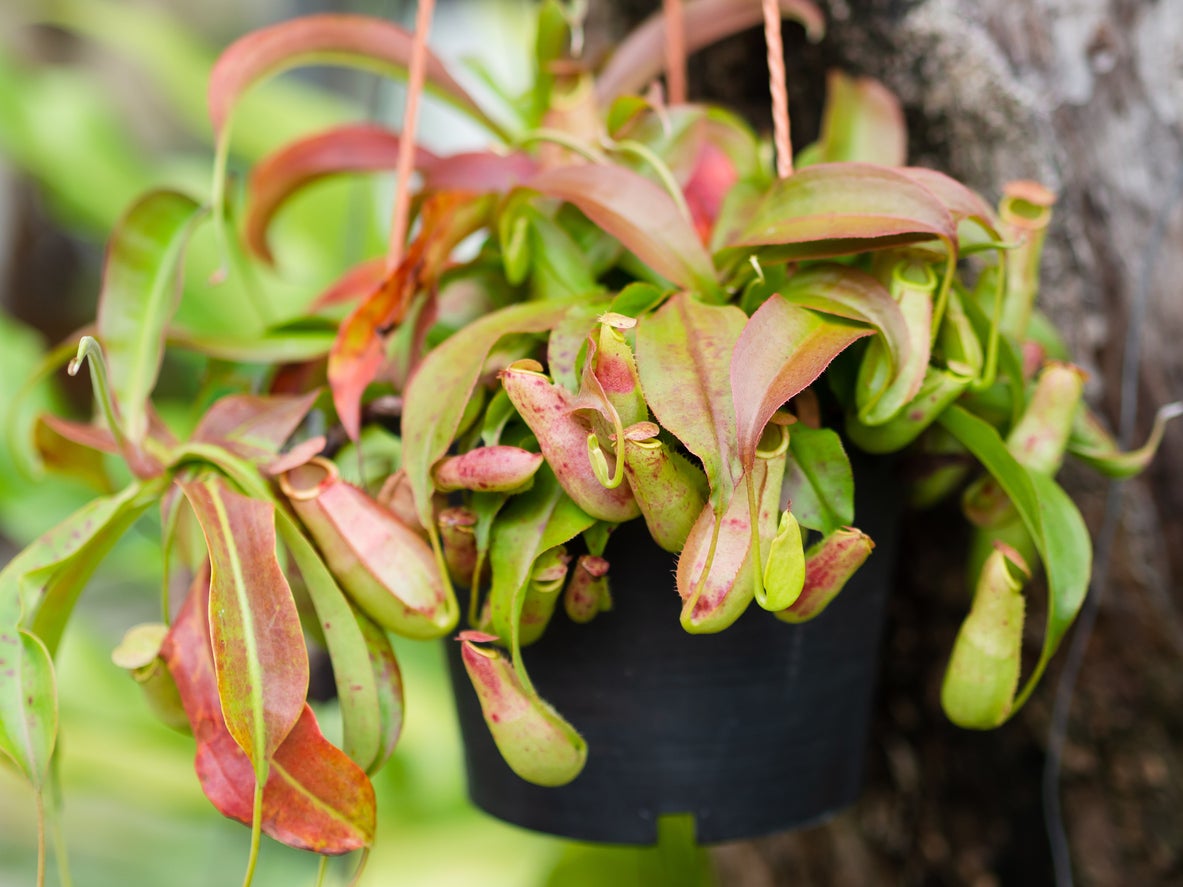 Nepenthes Pitcher Plants: Treating A Pitcher Plant With Red Leaves
Nepenthes Pitcher Plants: Treating A Pitcher Plant With Red LeavesNepenthes pitcher plants are often grown as houseplants. If you own one, you may see your pitcher plant leaves turning red. There are various possible reasons for a pitcher plant with red leaves; some require fixing, some do not. Click here to learn more.
By Teo Spengler
-
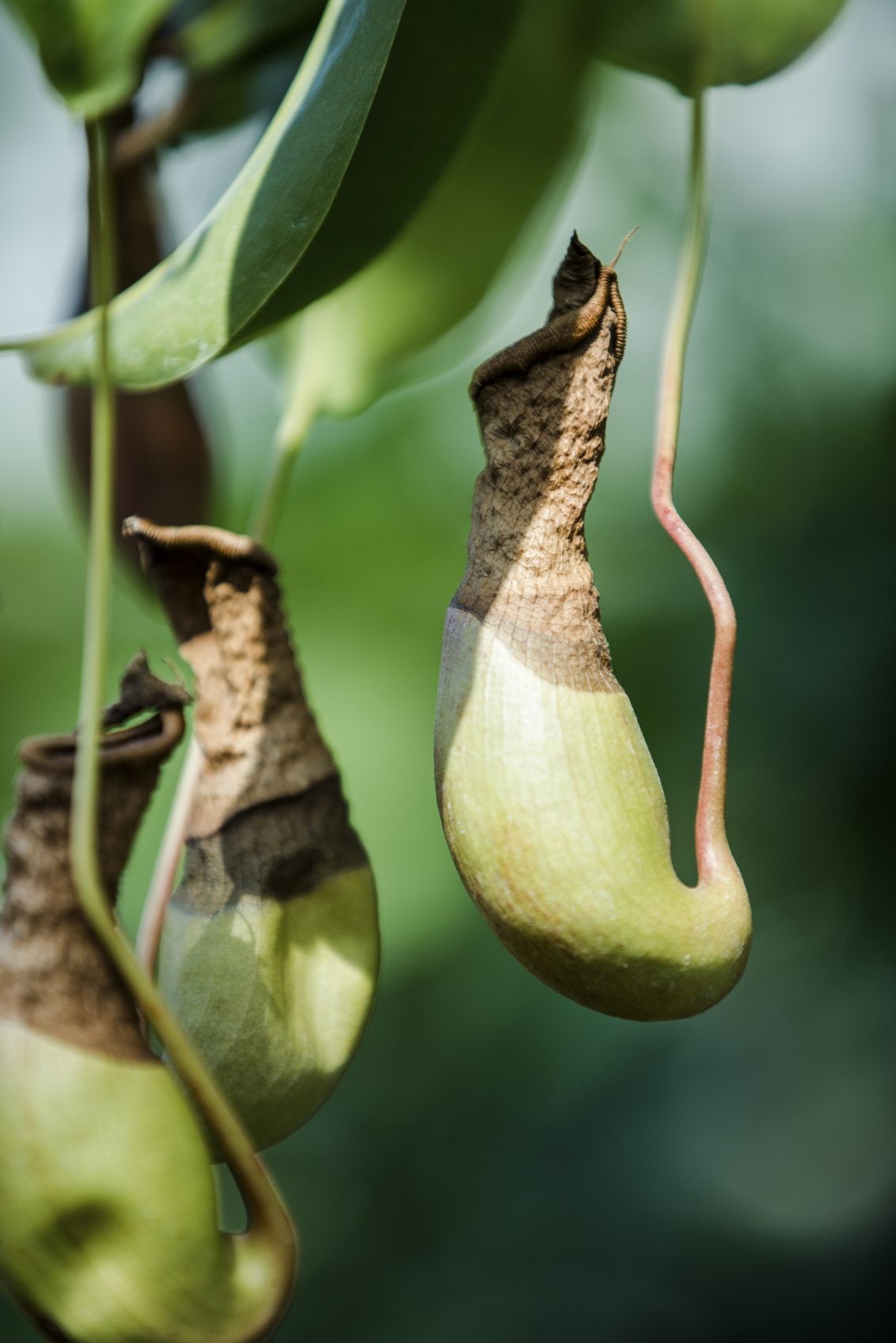 Pitcher Plant Pest Control: Learn About Pests Of Pitcher Plants
Pitcher Plant Pest Control: Learn About Pests Of Pitcher PlantsPitcher plants are exotic, fascinating plants, but they're prone to many of the same problems that affect any other plant, including pests. If you're wondering how to get rid of bugs on carnivorous plants, it can be tricky. Click here to find out why.
By Mary H. Dyer
-
 Do Pitcher Plants Bloom: Learn About Pitcher Plant Flowers
Do Pitcher Plants Bloom: Learn About Pitcher Plant FlowersDo pitcher plants bloom? They certainly do, and pitcher plant flowers are just as fascinating as the colorful, mysterious pitchers. Click on this article for more pitcher plant flower information. You'll be amazed at how lovely their flowers are.
By Mary H. Dyer
-
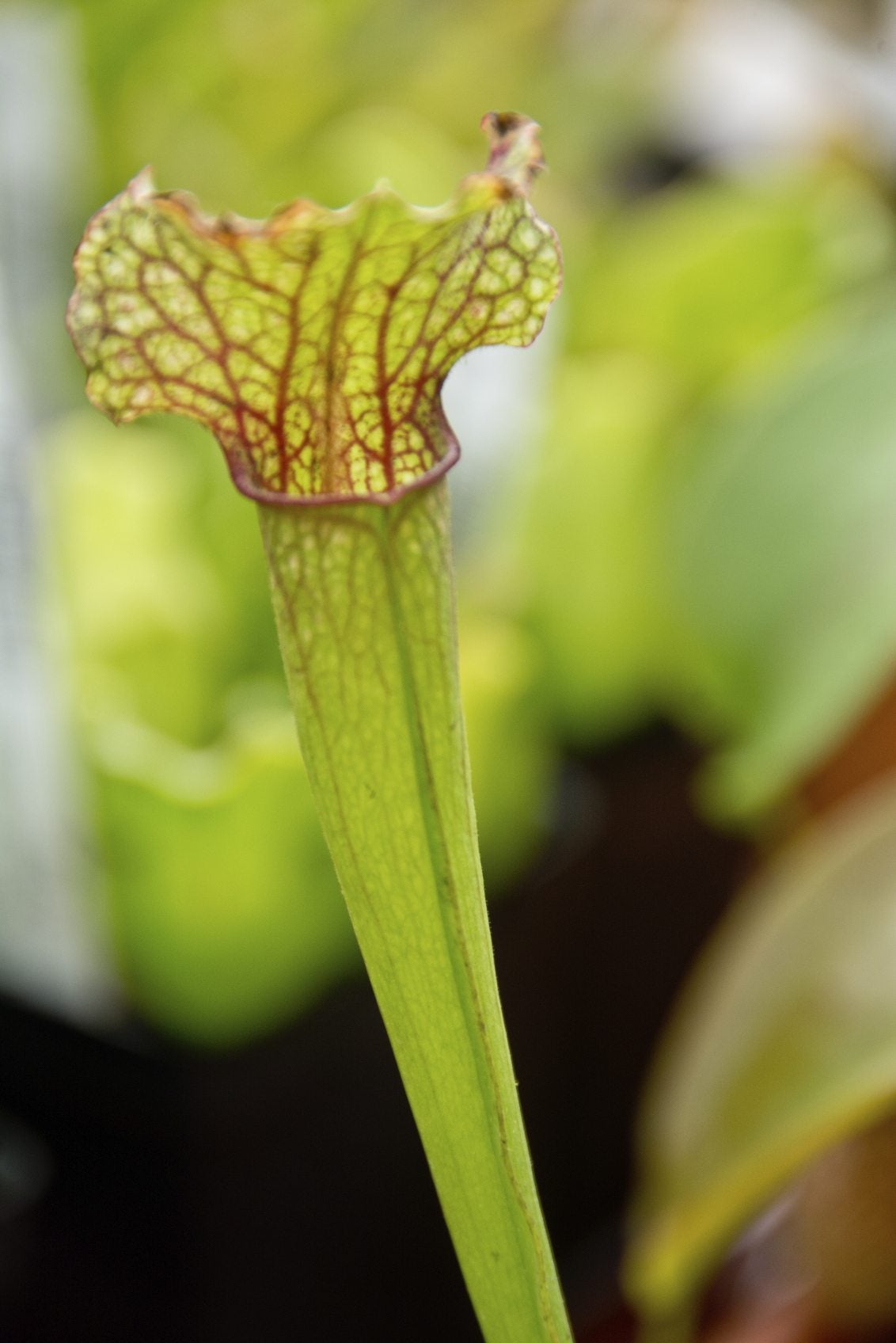 Carnivorous Plant Problems: Why A Pitcher Plant Has No Pitchers
Carnivorous Plant Problems: Why A Pitcher Plant Has No PitchersIf you're having carnivorous plant problems, such as a pitcher plant not making pitchers, it may require some troubleshooting to determine the problem. For helpful tips on this issue, simply click on the following article.
By Mary H. Dyer
-
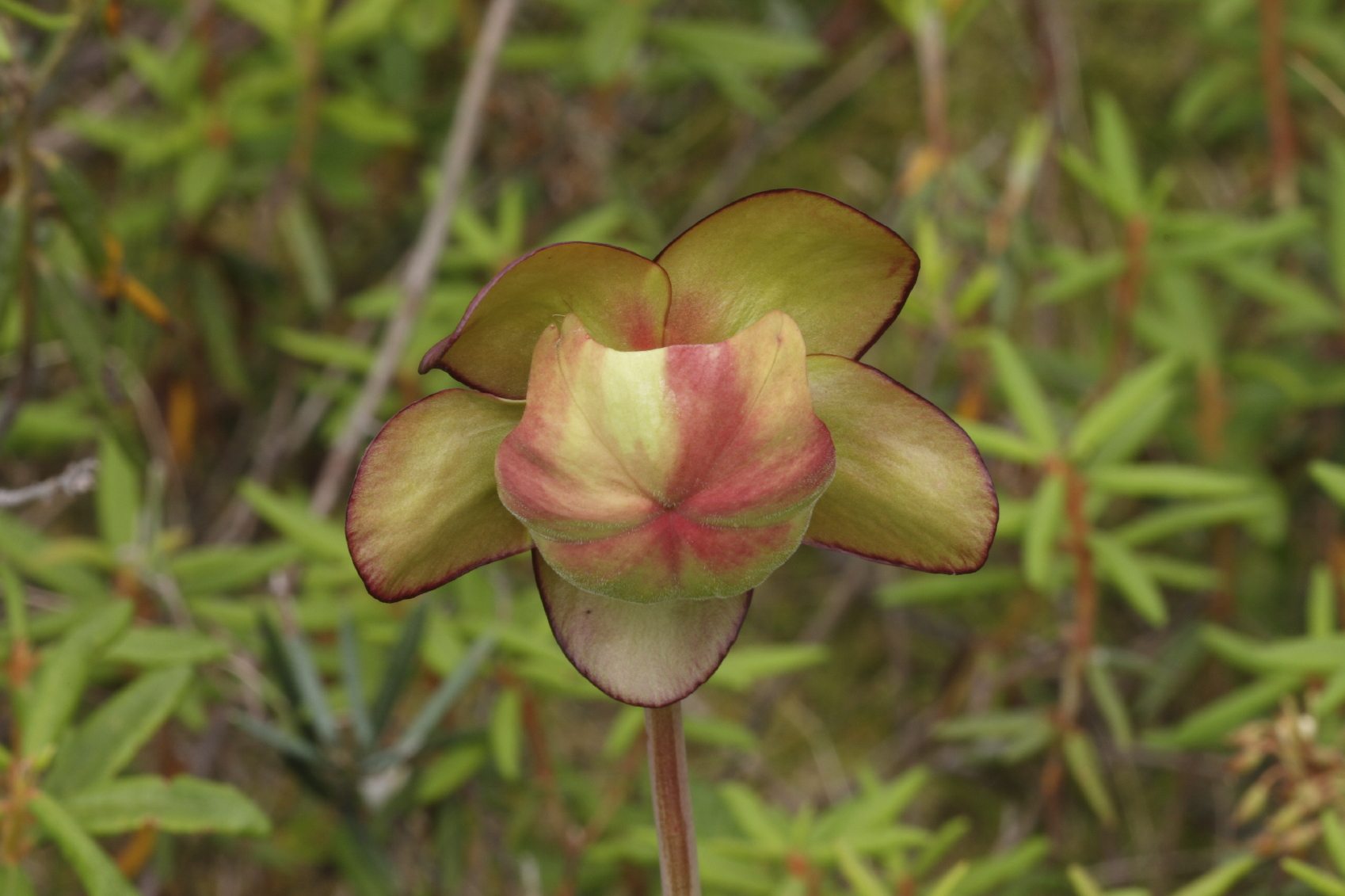 Pitcher Plant Seeds: Guide To Pitcher Plant Seed Growing
Pitcher Plant Seeds: Guide To Pitcher Plant Seed GrowingPitcher plant seed sowing is one of the best ways to reproduce this beautiful plant. But like the seeds of other carnivorous plants, they need special treatment to give them their best chance of growing. Click this article to learn more.
By Teo Spengler
-
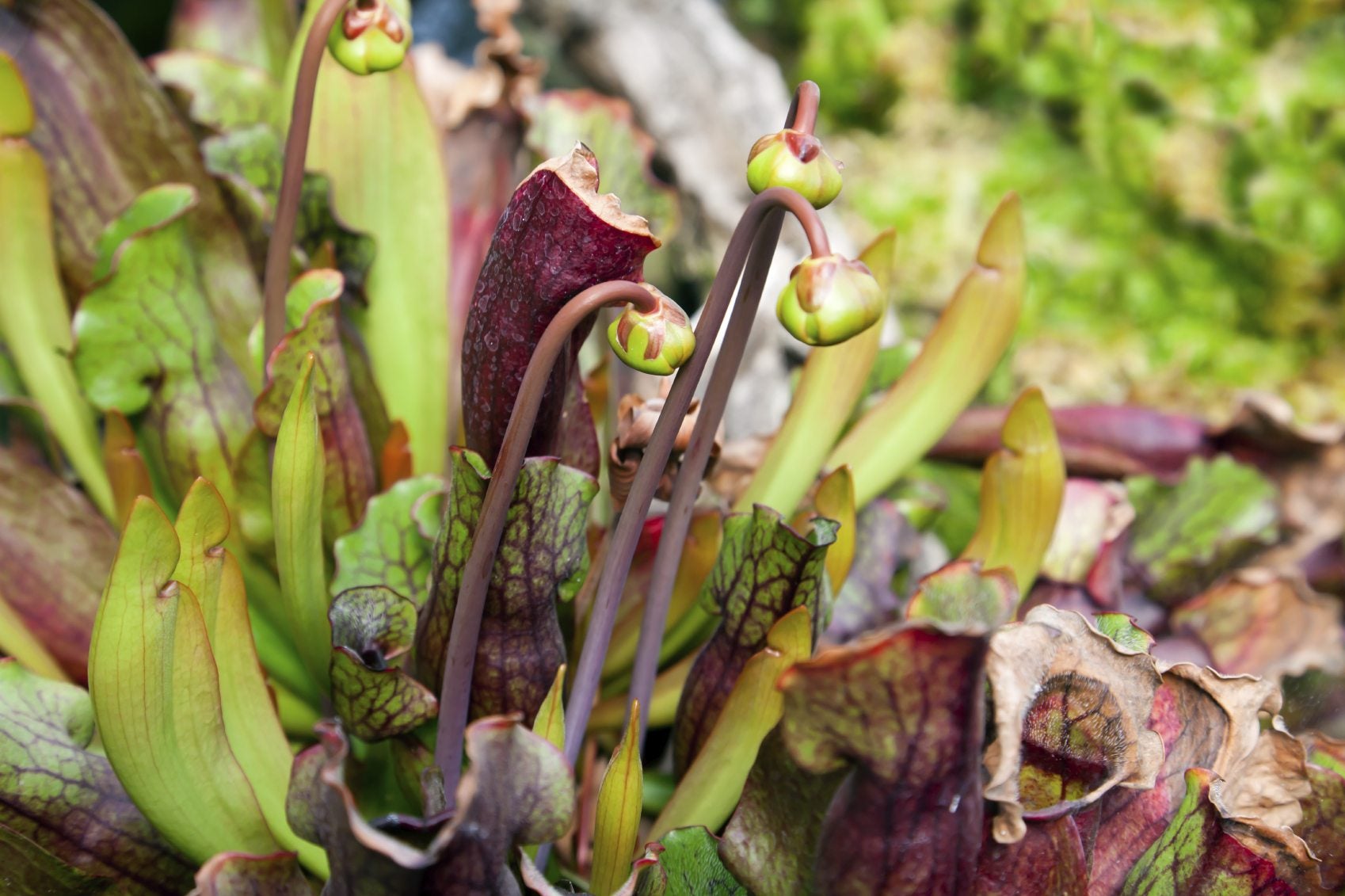 Trimming Pitcher Plants: Guide To Pruning A Pitcher Plant
Trimming Pitcher Plants: Guide To Pruning A Pitcher PlantGenerally, pitcher plants do not require much maintenance, but pruning a pitcher plant occasionally produces a more vigorous plant. Learn how to prune a pitcher plant and when it?s done in the following article. Click here for more info.
By Teo Spengler